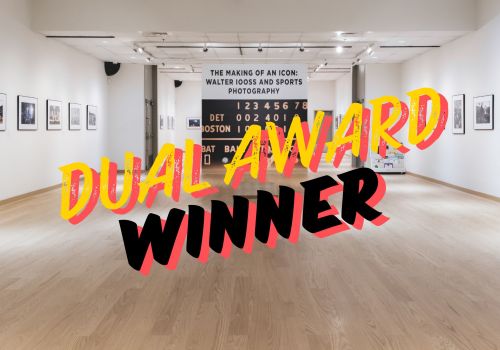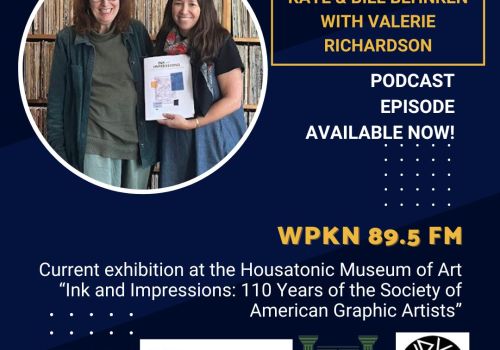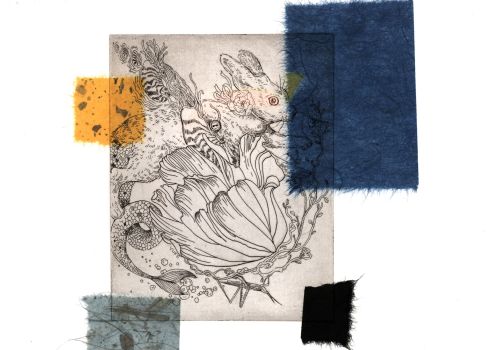
FLUIDITY AND FANTASY Essay
Fluidity and Fantasy: Susan Sharp's Abstract Paintings
By Donald Kuspit
Susan Sharp's abstract paintings are saturated with an indwelling luminosity on which intricately meandering lines spin themselves out, often composing themselves into free-form planes that seem to throb with a life of their own. As Merge, Lumin, Double Reveal and Orbit (all 2001) indicate, there is a very organic, spontaneous look to Sharp's paintings, suggesting her roots in classical biomorphic vision and her mastery of expressionistic process. In fact, the restless, forceful movement of her gestures emotionally engages us, all the more so because they perpetually change direction, as though uncertain of their purpose. We are, indeed, in an "internal world," which is where Sharp wants to be- a world rich with seductive color as well as impulsive movement, that is, a world libidinously and aggressively alive. In such dense works as Desire, Surge, and Internal Logic (all 1999), there is a surfeit of primordial emotion that rebounds back on itself. The sense of entanglement-of a bizarre Gordian knot of forms, colors, and lines all implicated in each other-stamps Sharp's abstractions with uncanniness. She in effect conveys, in abstract terms, the unresolvable tension in herself, which threatens to tear her apart even as it is the source of her creativity. The convulsive beauty of Sharp's paintings suggests that they are abstractly surreal, in line with Andre Breton's assertion that beauty is always convulsive, especially modern beauty.
But this beauty is not entirely personal-not only expressive of the convulsions of inner life, but, paradoxically, also of social convulsion, more particularly the convulsion of the Holocaust, as Shoah I and Shoah II (both 2001) indicate. There are not many paintings that are pure in the Greenbergian sense--that are committed to the medium as the be-all and the end-all of art-- that can at the same time convey the suffering of the Shoah. And convey it with epigrammatic abstract brevity. The grim black shape in Shoah II-its zigzag evokes a figure, and I can't help but hallucinate a face in its center-epitomizes the agony of the Shoah, while the weirdly ecstatic agitation of Shoah I conveys its violence. In The Beginning (2001) seems related. It is as though the death involved in the Shoah returns us to the beginning of life-demands that we re-affirm our faith in genesis and the life force. In a sense, all of Sharp's abstractions are about elemental germination-a Random Act (2001), as one of her paintings suggests, that occurs at an unpredictable moment. Sharp captures this moment again and again. It gives her paintings emotional as well as aesthetic life. It may be that such a horrendous event as the Shoah can only be suggested by the opposite that evokes it. It is also so humanly awful that it is best conveyed abstractly, for all that remains of it is its emotional effect. Our own feelings about it are all that can bring us near to it, now that it is history, and Sharp's pictures are full of intense, complicated, self-dramatizing feelings.
Love is also emotionally exciting and self-dramatizing, as Sharp's refreshingly abstract Kiss (2001), suggests. I don't know any other "representation" of a kiss like it. It is certainly a long way from those Klimt and Brancusi, as well as Hollywood. Sharp's daring work seems like a summary of all her ideas: the impassioned merger of forms that nentheless remain at odds with one another--that pull apart even as they hold together, tenuously. Sharp's forms meet at a tangent even as they sometimes overlap in grim interplay, as occurs between the black and the brown in the lower left quadrant. For all the abstract fluidity of Kiss, there is a sense of fantasy about the work, as though it was the image of an event that is being dissected before our eyes. Clearly it is about the emotions aroused by a passionate kiss, but they look like the painterly tissue left after the bodies involved have been dissected.
Sharp can paint both thickly and thinly, as the difference between Breathless and Crossing Over (both 1999) on the one hand, and Untitled #3 and #4 (both 2000) on the other, indicate. She is a master of surface, using acrylic, gouache, and graphite among other materials, as well as a variety of printing techniques, including rubbings and transfers. Collage also plays a role in her respect for the medium, however, fraught it is with personal meaning. Again, we come back to Sharp's enjoyment of her medium-her deft way of handling it, sometimes with swashbuckling energy, sometimes with delicate finesse. In The Bone (2000) is an ingenious fusion of both modes. It is a masterpiece of eccentric transformation, with one gesture unlike it yet derived from it, and a mass of gestures that seem to implode. The work has an air of "fragility" and "impermanence", to use Sharp's words, but also of power and durability. However unstable and erratic they seem, the gestures are made too firmly to be erased.


